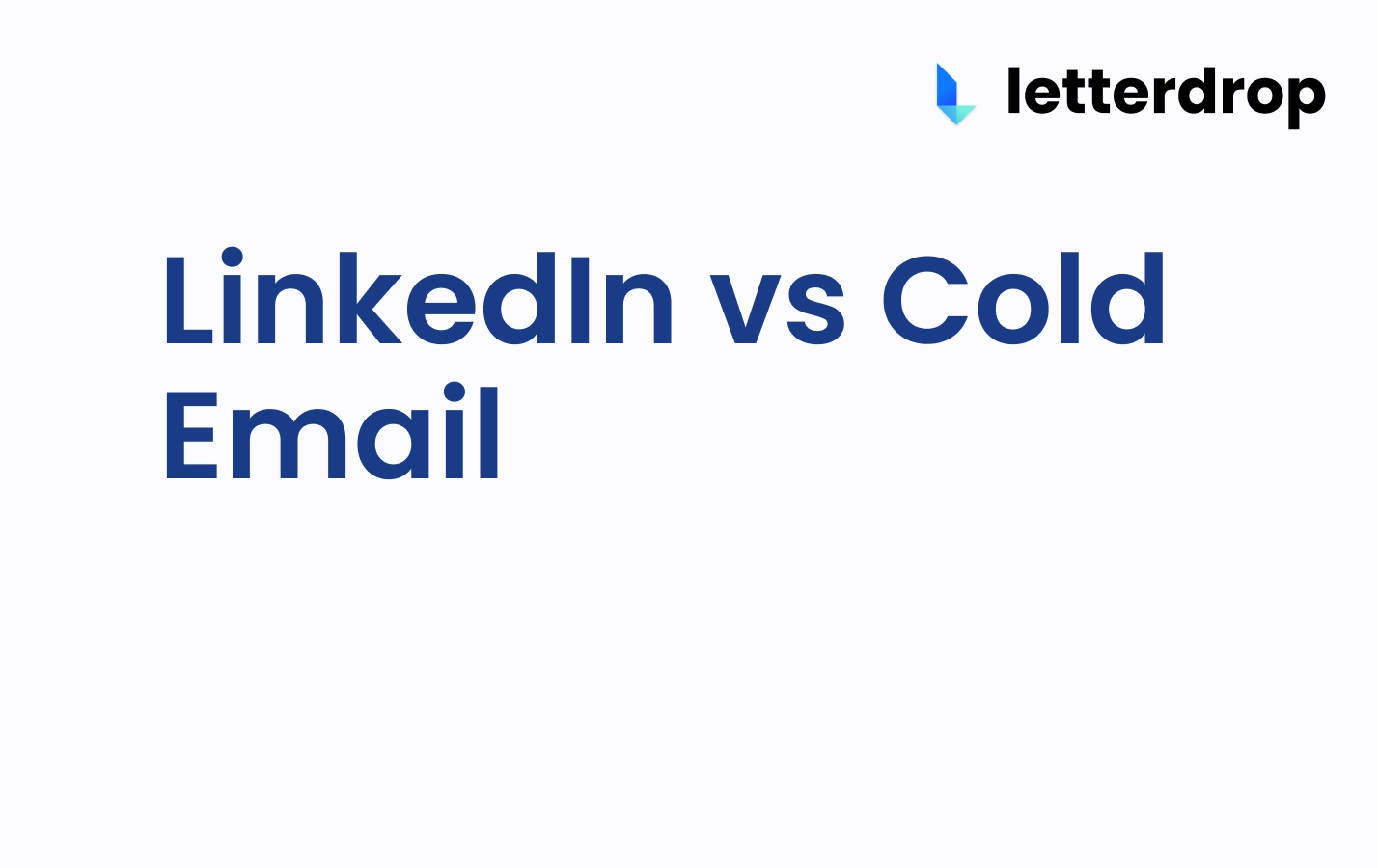A Guide to Creating LinkedIn Thought Leader Ads
TL;DR:
- LinkedIn Thought Leader Ads are sponsored posts from individual profiles that blend seamlessly into feeds.
- Content ideas for these ads include case studies, FAQs, unique POVs, and educational material.
- To set up these ads, log on to Campaign Manager, pick your objective, choose ad format, select content, request permission, and launch the ad.
- Budget effectively by targeting specific accounts, using retargeting, balancing top and bottom of the funnel, testing messaging and offers, and continuously optimizing performance.
What Are LinkedIn Thought Leader Ads?
LinkedIn Thought Leader Ads are sponsored posts from individual profiles that appear as regular posts with a small "Promoted by" disclaimer.
LinkedIn allows you to promote content from any user, including employees. (In March of this year, they became available for non-employee members.)

They're non-intrusive and blend seamlessly into people's feeds, offering subject matter expertise and insights rather than a salesy post.
Posts from people perform better than posts from company pages — people trust people. That's reason enough to do these ads.
More specifically, the benefits of these ads are:
1. Higher Engagement Rates for Lower Cost: Thought leadership ads drive higher engagement rates because they come from personal profiles, which audiences find more relatable and trustworthy. This results in lower costs per click (CPCs) and cost per thousand impressions (CPMs) compared to standard LinkedIn ads.
Meg Gowell (formerly Appcues) reported that Appcues saw:
- 95% lower CPC
- 12x higher CTR
- 37% lower cost per 1000 accounts reached
- 87% lower cost per conversion
2. Humanizing Brand and Building Trust: Real people are the ones posting instead of faceless corporations, and they're often executives and subject-matter experts. This makes your company more approachable and trustworthy off the bat. It also helps highlight your expertise and unique selling points, presenting you as an authority in your industry and helping you stand out
Examples of LinkedIn Thought Leader Ads
1. Case Studies and Customer Success Stories
An example of a case study thought leader ad might be a detailed post from a key team member about how your company helped a client overcome a significant challenge.
Chili Piper recently used thought leader ads to promote their Benchmark Report on demo conversion rates — Appcues did something similar.
It's even more powerful social proof if it comes from the customer's POV.

2. FAQs
The questions your prospects are asking in your discovery calls are similar to the questions other prospects in your network may have.
You can answer these questions one-to-many in your thought leadership ads.
3. Unique POVs
Posts sharing unique viewpoints might include a thought leader from your company discussing their perspective on industry trends or sharing innovative ideas that your company is exploring.
This adds value to your ads in a way that's difficult for competition to copy.
It could also be in the way you present ideas — Tim Davidson from B2BRizz is always creative.

4. Educational Material
This involves promoting an article or other educational asset to add value to your network for free.
Here's an example by Joshua Stout from Impactable.

How to Create Content for Thought Leader Ads
Successful thought leader ads demand high-performing and original content — aka, truly unique thought leadership content that actually drives business for you.
This isn't about writing a viral post one day. It requires consistent efforts and multiple attempts.
Encourage your team to habitually create thought leadership content on LinkedIn. When an organic post generates a lot of attention, double down on it with a paid ad.
We do have more on content ideas in our blog about creating effective LinkedIn posts, but here's where to get ideas:
1. Sales Calls: The questions, objections, and insights you hear during sales calls are often shared by many in your LinkedIn network. Posting about these topics or sharing answers from sales reps can generate demand and engagement for your thought leadership ads.

2. Existing Content: Refresh existing content into thought leadership posts, from blogs to webinars. Letterdrop can help you do that, too.
3. Industry Peers: Follow successful creators in your space that promote thought leadership ads themselves, like Meg and Tim. Remix their ideas with your perspectives, and using their posts as templates. This can help you stay relevant and provide fresh content to your audience.

4. Your Conversations: Beyond talking to customers, engage meaningfully with your network both online and at events. Repurpose these conversations into LinkedIn posts. Internal discussions can also be a goldmine for content, provided they add value to your audience.

5. Professional Experiences and Insights Relevant to Your ICP: Share experiences that can help others in your network improve their jobs or learn something new. This can include hard lessons learned, recent milestones, industry trends, and thought-provoking questions.

6. Original research and data. Turn proprietary data, subject matter footage, and more into thought leadership ads. This keeps your ads unique from that of your competitors.

How to Set Up Thought Leadership Ads on LinkedIn
Here's the six-step process for setting up thought leadership ads:
1. Log On to LinkedIn and Go to Campaign Manager: This is where you’ll find the Thought Leader Ad section.
2. Pick Your Objective: Select between 'Brand Awareness' and 'Engagement'.
3. Choose Your Ad Format: You can choose between text ad, image ad, video ad, and more.
4. Select the Content to Promote: Click on 'Browse Existing Content' and then filter by 'Employees' to upload the employee’s content you wish to sponsor.
5. Request Permission: Request approval from the employee whose post you want to promote. They must approve this request before you can proceed.
6. Launch the Ad: Once approved, click 'Sponsor' to launch your ad.

Budgeting for LinkedIn Thought Leader Ads
When it comes to budgeting for LinkedIn Thought Leader Ads, it's important to strike a balance between top-of-funnel activities and accelerating your sales pipeline.
Here's how to allocate your budget effectively, according to Tim:
- Targeting Specific Accounts: LinkedIn allows for precise targeting of specific accounts, which can significantly reduce waste. Focus your budget on targeting high-value accounts that are more likely to convert. This ensures your ads reach the right people and increases the efficiency of your spend.
- Use Retargeting: Retargeting can be a cost-effective way to keep your brand in front of potential customers who have already shown interest. By targeting visitors to specific pages on your website, such as product or pricing pages, you can tailor your ads to move them further down the sales funnel.
- Balancing Top and Bottom of Funnel: Tim suggests starting with a smaller budget for bottom-of-funnel activities, such as retargeting based on website visits, and adjusting based on performance. For top-of-funnel, focus on brand awareness and engagement to attract new prospects, gradually moving them down the funnel.
- Messaging and Offers: Test different messages and offers to see what resonates best with your audience. Davidson emphasizes the importance of customer research to understand what your buyers care about. Offers like demos, case studies, or incentives can be effective, but always lead with the value of your product first.
- Continuous Optimization: Regularly review your ad performance and adjust your budget allocation based on what’s working. Look at metrics like engagement rates, conversion rates, and cost per lead to guide your decisions.
Thought Leadership Ads are a Softer Sell
But soft doesn’t mean slow. Disco activated 8 AEs on LinkedIn and saw inbound pipeline lift within 30 days. Automating posts → faster tests → faster meetings.
Subscribe to newsletter
No-BS GTM strategies to build more pipeline in your inbox every week
Related Reading
Some other posts you might find helpful
















